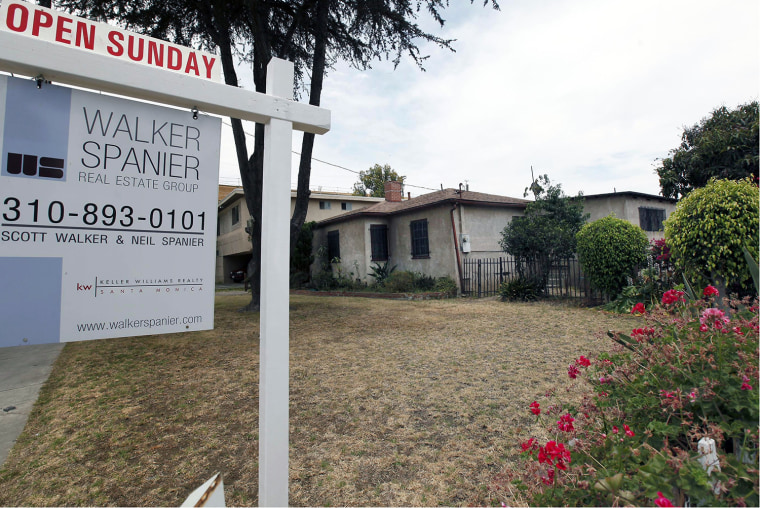They say all real estate is local, but the West has more recently been an indicator of what is to come for the rest of the nation. It was the first region to crash in the mid-2000's and the first to show signs of recovery toward the end of the last decade. Now the tides have turned again.
Sales of existing home sales nationally fell 3.2 percent in October from the previous month, but in the West they were down 7 percent. The West was also the only region to see a year-over-year decline in home sales.
"In the West region there is a significant shortage of inventory, so you have buyers who are looking for the right home unable to find it and unwilling to commit," said Lawrence Yun, chief economist for the National Association of Realtors. "But because of the inventory shortage, one is still seeing strong price increases in the West."
California is a glaring example. The median price paid for a California home in October was $357,000, up over 25 percent from a year ago, according to San Diego-based DataQuick. This was the 20th-consecutive month of annual price gains and the 11th month where those gains exceeded 20 percent.
As distress, in the form of foreclosures and short sales, move out of the West, there are far fewer low-end homes to buy. Just 6.6 percent of California homes sold in October were foreclosures, the lowest level since 2007. Supplies are down 26 percent in San Francisco, according to the California Association of Realtors, and that is pushing many buyers to condos instead of single family homes.
Condominium sales nationwide were actually up over 3 percent in October month-to-month, according to the NAR, while sales of single-family homes fell over 4 percent.
"Many buyers are considering more affordable options, such as condos and town-homes, especially in the San Francisco Bay area, where there is a greater abundance of these property types," CAR's Leslie Appleton-Young said in a release.
While home prices in California, and across the nation, are still well below their peaks of the housing boom, there is a major difference for home buyers today: credit. Mortgage rates may be lower on the 30-year fixed, but that wasn't the product used during the boom. Adjustable rate loans with no down-payment requirement and 1-percent "teaser" rates were popular. Those are gone today. Now, most loans are fixed-rate products that require larger down-payments and higher credit scores.
"Bottom line, on a monthly-payment basis and relative to income needed to qualify for a loan, a house in California is far more 'expensive' than from 2004 to 2008, even though house prices are not back to peak levels," said Mark Hanson, a California-based housing analyst. "Put another way, it costs a lot more today to pay for a house using a mortgage than it did from 2004 to 2008. Thus, if 2004 to 2008 was a "bubble," then this must be, too."
On the flip side, home price gains are slowing in Phoenix, Arizona, which like California saw prices jump over 25 percent recently. Now they are up just 16 percent annually, according to CoreLogic. Sales fell 8 percent in September, despite a 32-percent jump in inventory, according to the Cromford Report.
Investors may be putting some properties back on the market again in Phoenix, eager to take advantage of higher prices, but those same higher prices are crimping demand. If this is an indicator of what is to come in California, that is a clear red flag.
The rest of the nation did not see the same dramatic swings as most Western markets, but the supply, demand and pricing dynamics are similar. Prices are up over 12 percent nationally and inventories are down across the nation. For those predicting the national housing market over the next six months, watching the West is a good idea.
